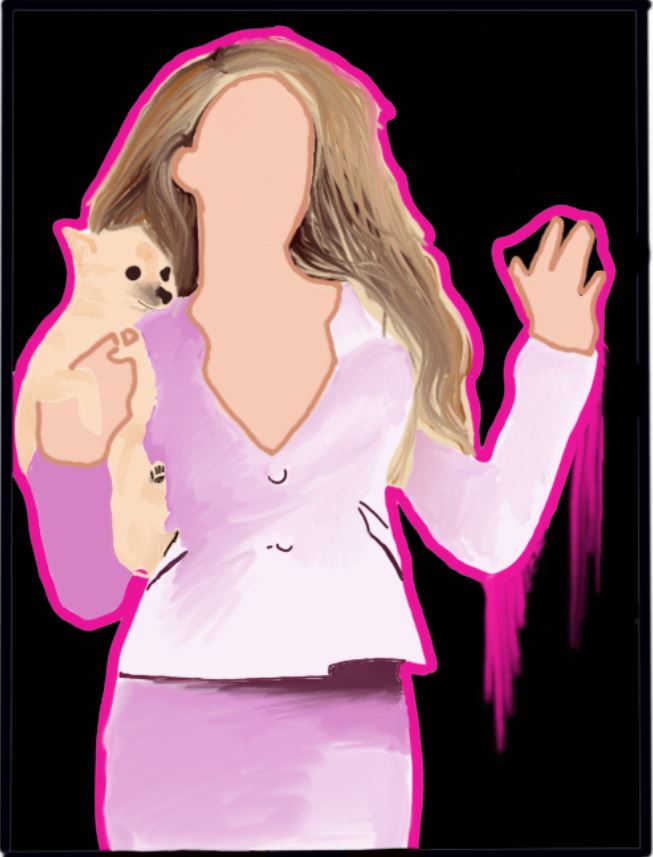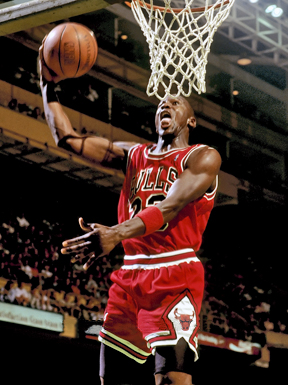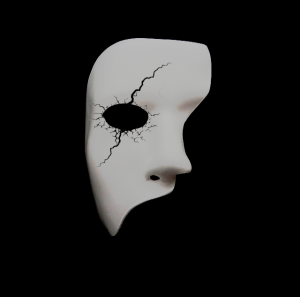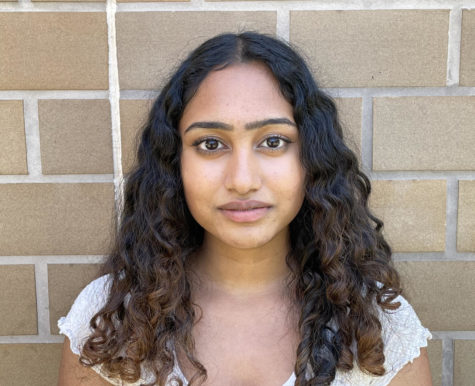“This Is Paris” documentary illustrates the shadow of Paris Hilton’s past
Paris Hilton, the multimillionaire hotel heiress, holds her late dog, Tinkerbell while in an all pink dress.
October 30, 2020
The poignant documentary “This Is Paris” presents the concealed and grim portrait behind the face of Paris Hilton, the hotel heiress and multimillion dollar business owner. From her modeling descent to the release of “Simple Life” in 2003, Paris had already built a huge fandom through her teenage years. Variety crowned her as the “Billion Dollar Entrepreneur” in 2011, for her blooming business with 19 product lines from fragrances to skincare to makeup. Underneath Paris’s sparkling fame and glistening money, she suppressed her authentic character and put a veil around her emotions. Director Alexandra Dean and producer Aaron Saidman unearthed deep into the roots of Paris’s past to portray a chilling and sincere documentary of the real Paris Hilton.
“I feel like the whole world thinks they know me because I have been playing this character for so long,” Paris said.
The documentary slides into motion with a lively and energetic introduction of Paris as the persona she portrayed on camera. A vivid color scheme consisting of hot pink and light pink is shown as clips of her in movies, tv shows, interviews and ads get played. In the background, an 80s song, “Just like Honey” by The Jesus and Mary Chain, sets an upbeat and colorful start to the documentary.
“ My mom wanted me to be Hilton, and I just wanted to be Paris,” Paris expressed.
The documentary switches from interviews with her mom and her sister, illustrating a big picture of Paris off camera. One of the main directing skills that can be seen in this documentary is the cuts from past to present — little clips of Paris in earlier interviews then cut back to what Paris was doing in the present. This gives a more honest and real window to Paris, showing how she learns and grows. After the introduction, the documentary switches to deeper topics such as her sex tape scandal and the fight between Paris and her current boyfriend, Aleks, at the time of filming.
“That was a private moment with a teenage girl, not in the right headspace. But everyone was watching it and laughing like it’s something funny,” Paris stated.
As the documentary goes through the topics of the sex tape, they use news reports, tv show broadcasts, and fan and media commenting on the release of the sex tape. The use of other sources showed a more personal deeper side of Paris’s story. When talking with Alexandra Dean the director of the documentary, she claimed that she wanted to reframe what we knew about Paris. The portrayal of the news reports on her situation showed a dark and depressing side of the media, and Alexandra Dean did a great job at increasing the volume on Paris’s opinion on the situation. As the documentary cuts to the present, we are shown a fight between Paris and Aleks right before Paris’s concert at Tomorrowland. Alexandra Dean says she wants the viewer to perceive this scene as “refreshing” because she was setting boundaries with Aleks.” The big fight was over attention and how Aleks was trying to fight with Paris right before her big concert. During this scene, there were cuts to her talking about past boyfriends. This brought a value to the scene, symbolizing that the fight was a push against all her abusive relationships.
“ I have horrible Insomnia, I’m scared to go to bed at night. I have this recurring nightmare, no matter what I do,” Paris said.
Little clips of graphics are shown displaying Paris’s disturbing nightmares, where everything is black and white. These graphics are cut into scenes anytime Paris talks about her past and lets the viewer get inside Paris’s head and mind. The use of animations and graphics give a personal connection for the viewer to Paris Hilton since they are her nightmares brought to reality. This opened up Paris, and due to the use of graphics it helped connect the viewer more to Paris’s story.
“I thought I was being kidnapped. I started screaming for my mom and dad. Like “Help me” and no one came. As they were taking me, I saw my parents standing by the door, crying. No one would tell me what was going on,” Paris said.
The documentary takes a sudden twist as it dives deeper into Paris’s past at Provo Canyon School. She talks about getting kidnapped through her parents permission and being sexually, physically and mentally abused at that school. This whole section flips from Paris talking to her friend about her experience at that school while having cuts of graphics, some colorful and some that are not. The graphics when talking about her story of abuse brought a better insight into her past, making the viewer actually step into that reality through the animations. They also use slow music and echo her words more to make the viewer feel like they were actually in that situation with her. This was very significant, because it helped understand the situation and the battle Paris was going through. They dramatized when Paris was talking about their abuse at Provo Canyon but just enough to make it seem very real and scary.
“ I don’t know if my nightmares will ever go away, but I do know there are probably hundreds and thousands of kids who are going through the same thing right now. Maybe if I can help stop their nightmares, it will help stop mine,” Paris said.
At the ending, Paris sits down with her mom to talk about her experiences in Provo Canyon School, and why she never opened up to them. This was little rushed, the build up from when Paris talked about Provo Canyon left the ending a little sore. When talking to her mom, there was just footage of her talking with her mom. When asked about the direction put into the ending Alexandra Dean said she wanted the viewer to feel that scene between Paris and her mom out. This part was very honest and clear because it had no extra add-ons since they were looking for a simpler ending. Without any elements and just footage of them sitting down and talking, it felt very off since it was not continued through the whole documentary. The ending felt a bit uncut, and gave off a very unnatural vibe. It still had meaning and passion, but it was very torn down of all the elements to become powerful enough to impact people’s final thoughts.
“ I’ve worked so hard to build this brand. It’s been about this perfect, happy life and that story was never part of this brand,” Paris said.
Overall, the documentary was very emotional and had a lot of good content on Paris and her trauma. The use of graphics to visualize Paris’s nightmares were very realistic and brought a new perspective for the viewer. The documentary was great at delivering the content and they showed Paris in a very natural and pure environment. She was displayed as a normal human being in the documentary, which was a fresh breath of air, as they focused more on her struggle and sorrow. Paris Hilton was more personified in this documentary and openly expressed herself. The documentary bought a new filter to Paris and molded her into more of a human than what the media prejudiced her for.





